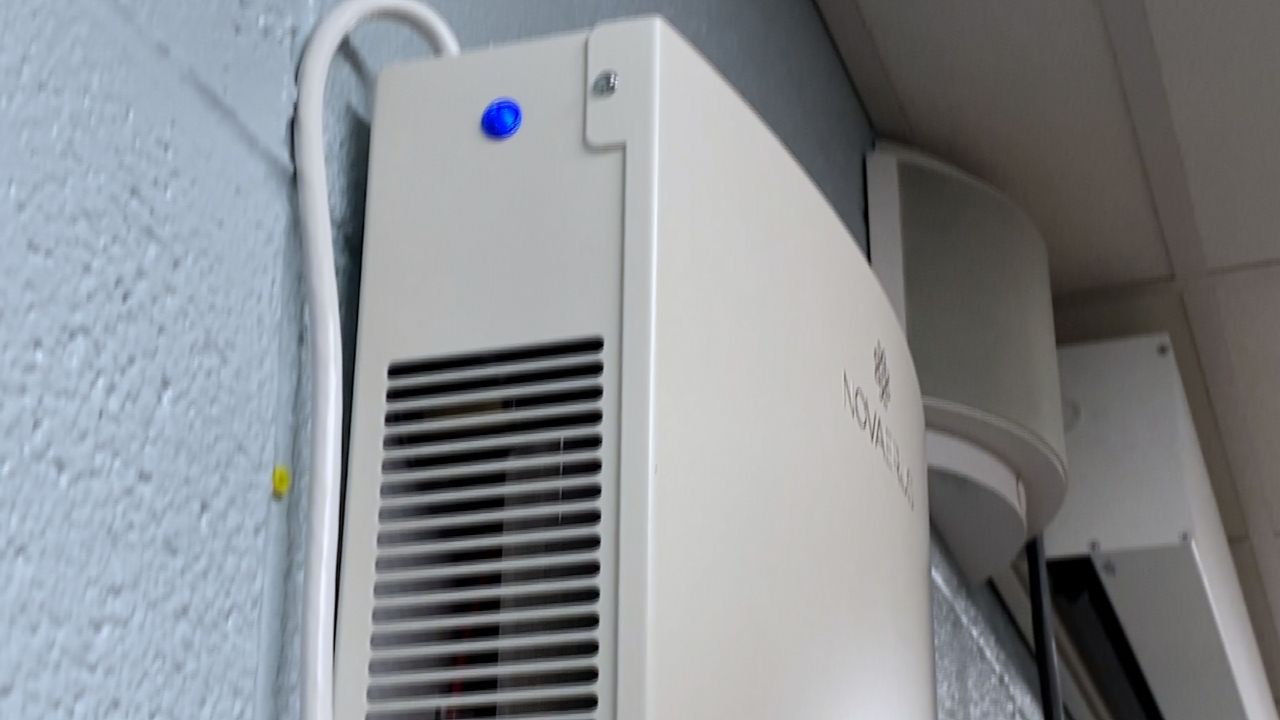INDIAN HILL, Ohio — In her 2nd grade classroom, Kristi Booth knows her students learn best when they can experiment, work together and put their hands to work, all of which would be much harder if her students were learning remotely.
To keep them in the classroom for the foreseeable future, Booth and her fellow Indian Hill teachers are relying on a new piece of technology in their classroom, focused on the invisible threats that might lurk in the air.
In April, the district began installing Nanostrike Air Cleaning units in Indian Hill Primary School after consulting with Cincinnati-based, ProtectED.
Lindsey Haglage, ProtectED’s business director, said the small wall units, roughly 18 in. by 12 in., promise not just to filter the air, but to sanitize it.
“Contaminated air comes into the top and the bottom of the device,” she said.
From there, NanoStrike, or plasma technology, kills viruses, bacteria and other pathogens.
“Only clean air comes out,” Haglage said.
The technology itself is nothing new. It’s been used at hospitals and health care facilities for years, but during the pandemic, Haglage said ProtectED saw an opportunity to expand it to schools, in the hopes another tool in their toolbox could help keep classrooms return to in-person learning as safely as possible.
“The safety, health and wellbeing is something parents care more about in schools than anything,” Indian Hills Superintendent Kirk Koennecke said.
Koennecke said the Indian Hill district has been working with ProtectED throughout much of the pandemic to ensure they were taking the best possible precautions to keep its classrooms open.
“We wanted to find research-based technology,” he said.

With years of evidence showing the cleaning units worked in health care settings, Koennecke said he was convinced they could make a difference in his classrooms. He ordered 143, one for every classroom and major gathering area in the district.
They should all be installed by the end of June, ensuring a safer start to the next school year.
“When they drop their child off, they want to know that they’re in the safest environment possible, and we have that now,” Koennecke said.
As for teachers like Booth, she said she hardly notices the unit. It’s so quiet and unassuming, and requires no extra work on her part to keep it going.
“We don’t turn them on,” she said. “They’re automatic.”
It’s only been a few weeks since the units were installed at Indian Hill Primary School, so Koennecke said it’s too soon to tell if they’ve made a difference when it comes to attendance, but so far he said parents and teachers feel far more confident in their safety.
According to the Centers for Disease Control and Prevention, air filtration and ventilation is one method to help reduce the spread of COVID-19, but epidemiologists recommend using multiple methods such as vaccination, social distancing and masking to increase protection.




